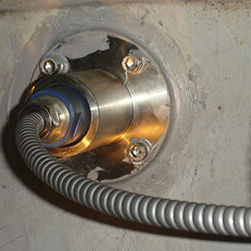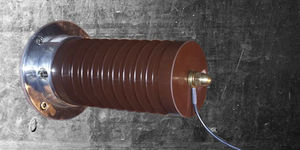
- Company
- Products
- Catalogs
- News & Trends
- Exhibitions
Movement monitoring unit
Add to favorites
Compare this product
Characteristics
- Applications
- movement
Description
Bearings are the most critical and vulnerable mechanical components of a rotating machine. Bearing failure can lead to complete machine failure, causing accidents, operation interruption and financial loss.
The amplitude of radial shaft vibrations and radial position are the main indicators of the overall mechanical condition of rotating machines.
Early detection of a defect that develops in a bearing’s rolling element can prevent an unexpected failure and its potentially disastrous consequences.
Many machine malfunctions can be detected, including rotor unbalance, misalignment, bearing wear and friction with these measurements.
Some types of machines produce vibrations that are not easily detected by measuring the relative dynamic movement of the shaft in relation to the bearing.
Depending on the bearing stiffness, the vibrations can be transferred directly to the bearing housings. This can also occur at displacement amplitudes that cannot be detected by shaft measurement methods.
In such cases, a piezoelectric accelerometer or a seismic velocimeter are used to measure the severity of the bearing vibrations.
Wear of roller bearings
2 piezoelectric sensors installed at 90° – X/Y in the radial direction.
MPS: Boadband characteristic values (RMS, BCU,…)
CMS: Frequency-selective characteristic values (Envelop spectrum)
Catalogs
No catalogs are available for this product.
See all of MC-monitoring SA‘s catalogsRelated Searches
- Measurement monitoring device
- Real-time monitoring device
- Condition monitoring device
- Digital monitoring device
- Process monitoring device
- Online monitoring device
- Ethernet monitoring device
- Machine monitoring device
- Data acquisition monitoring device
- Modbus monitoring device
- Smart monitoring device
- Modular monitoring device
- Robust monitoring device
- Bearing monitoring device
- Monitoring unit
- Machine condition monitoring device
- Machine protection monitoring device
- Multi-channel monitoring device
- Rotary machine monitoring device
- Turbine monitoring system
*Prices are pre-tax. They exclude delivery charges and customs duties and do not include additional charges for installation or activation options. Prices are indicative only and may vary by country, with changes to the cost of raw materials and exchange rates.









